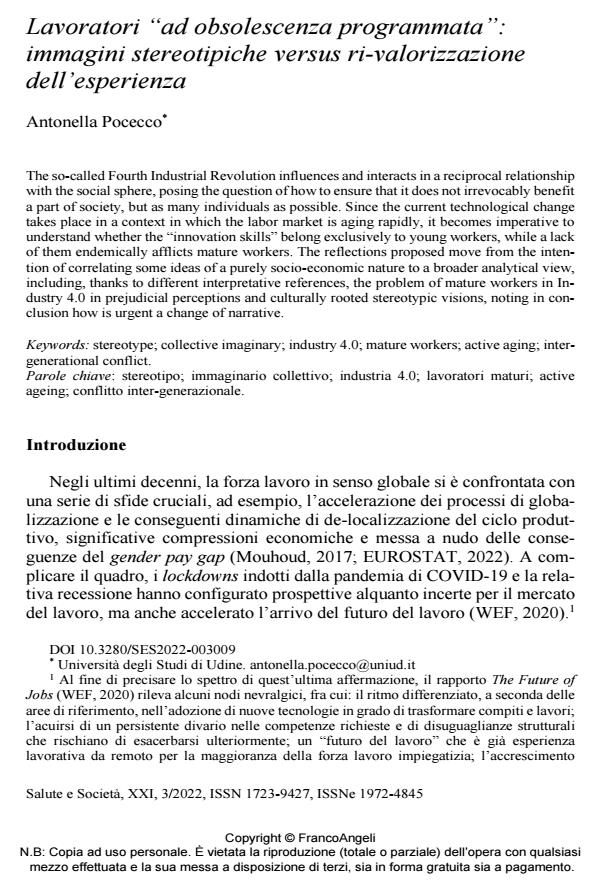Lavoratori "ad obsolescenza programmata": immagini stereotipiche versus rivalorizzazione dell’esperienza
Journal title SALUTE E SOCIETÀ
Author/s Antonella Pocecco
Publishing Year 2022 Issue 2022/3
Language Italian Pages 13 P. 121-133 File size 408 KB
DOI 10.3280/SES2022-003009
DOI is like a bar code for intellectual property: to have more infomation
click here
Below, you can see the article first page
If you want to buy this article in PDF format, you can do it, following the instructions to buy download credits

FrancoAngeli is member of Publishers International Linking Association, Inc (PILA), a not-for-profit association which run the CrossRef service enabling links to and from online scholarly content.
The so-called Fourth Industrial Revolution influences and interacts in a reciprocal relationship with the social sphere, posing the question of how to ensure that it does not irrevocably benefit a part of society, but as many individuals as possible. Since the current technological change takes place in a context in which the labor market is aging rapidly, it becomes imperative to understand whether the "innovation skills" belong exclusively to young workers, while a lack of them endemically afflicts mature workers. The reflections proposed move from the intention of correlating some ideas of a purely socio-economic nature to a broader analytical view, in-cluding, thanks to different interpretative references, the problem of mature workers in Indus-try 4.0 in prejudicial perceptions and culturally rooted stereotypic visions, noting in conclusion how is urgent a change of narrative.
Keywords: stereotype; collective imaginary; industry 4.0; mature workers; active aging; inter-generational conflict.
Antonella Pocecco, Lavoratori "ad obsolescenza programmata": immagini stereotipiche versus rivalorizzazione dell’esperienza in "SALUTE E SOCIETÀ" 3/2022, pp 121-133, DOI: 10.3280/SES2022-003009